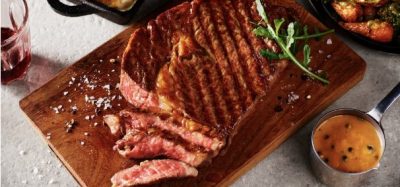An open mind
- Like
- Digg
- Del
- Tumblr
- VKontakte
- Buffer
- Love This
- Odnoklassniki
- Meneame
- Blogger
- Amazon
- Yahoo Mail
- Gmail
- AOL
- Newsvine
- HackerNews
- Evernote
- MySpace
- Mail.ru
- Viadeo
- Line
- Comments
- Yummly
- SMS
- Viber
- Telegram
- Subscribe
- Skype
- Facebook Messenger
- Kakao
- LiveJournal
- Yammer
- Edgar
- Fintel
- Mix
- Instapaper
- Copy Link
Posted: 25 February 2020 | Bethan Grylls (New Food) | No comments yet
The UK’s first insect bread aims to provide consumers with a sustainable protein alternative. New Food’s Editor, Bethan Grylls, investigates.
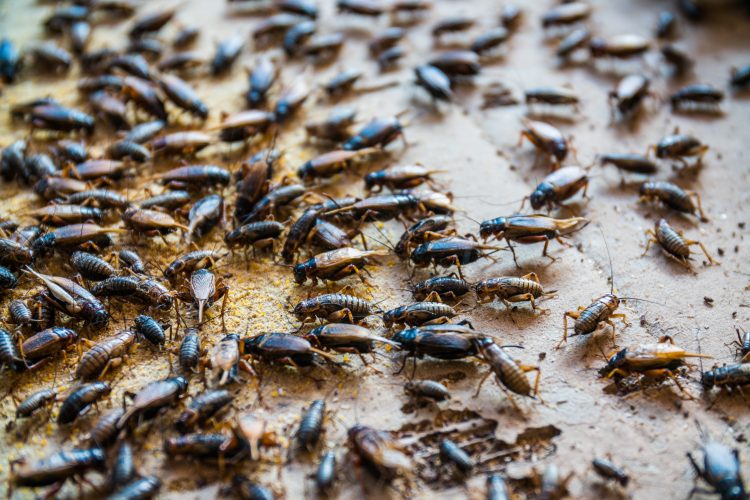

Today’s consumers are savvy; they have become better informed and more interested in the food they eat and where it comes from. One reason behind this is a push for sustainable practice and a desire to know precisely what impact our food is having on the planet.
The concept of sustainability has become familiar across nations and set the food and beverage industry the daunting task of delivering produce that is not only enjoyable, but safe, healthy, and of course, environmentally friendly.
Sustainable production
Although perceptions of entomophagy (eating insects) are changing, it remains a relatively small market in the UK. However, we are starting to see more Brits brave the bugs, perhaps spurred on by our curious natures or celebrity endorsement – Angelina Jolie, for example, promoted a film in Cambodia by eating insects with her children.
In the hope of moving from gimmick to acceptable food, Roberts Bakery released a limited edition cricket loaf – the UK’s first insect bread.
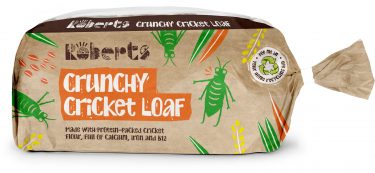

The innovation team hopes that by combining bread with crickets, this novel ingredient will become more accepted
The bake uses cricket flour supplied by Eat Grub, a leading UK insect food brand that aims to revolutionise Western food culture by introducing insects as a staple ingredient.
“The UK has been fascinated by the idea of bug eating since the first time we watched I’m a Celebrity. What we need right now is for people to see it as a more serious food source – something as acceptable as bread,” Alison Ordonez, Head of Innovation at the bakery firm, told New Food.
Although it might seem like a unique ingredient to Western societies, insects such as crickets are very nutritious. One hundred grams of cricket provides 69g of protein; they also contain all nine essential amino acids and important minerals like iron and calcium.
Despite these health benefits, the market is modest; Ordonez admitted that a mass audience will take time. However, entomophagy has become accepted in countries where protein is more difficult to come by. The challenge with the UK, where other protein options remain plentiful, is making insects an acceptable – and preferred – alternative, she explained.
So, if Britons don’t have a protein issue – why bother? There are approximately 7.8 billion people in the world and that number is set to grow. With a bigger global population comes the need to increase food production, increasing pressure on our already limited resources. According to the UN Food and Agriculture Organization (FAO): “If agricultural production remains in its present form, increases in greenhouse gas emissions, as well as deforestation and environmental degradation are set to continue. These environmental problems, particularly those associated with raising livestock, need urgent attention.”1
Our mission is to be the next generation bakery.
In the majority of countries livestock and fish are crucial sources of protein, with livestock production accounting for 70 percent of all agricultural land use. Demand for meat products is expected to more than double between 2000 and 2050, while fish production has seen a steady rise in popularity over the last five decades. So, while the UK might not be protein‑challenged yet, it is clear to see that livestock and fish production and consumption are reaching their limits.
“Western cultures are very spoilt; we have a lot of land to cultivate and breed cattle on. So why go out of our way to breed other food sources when we have this huge industry that can provide cheap meat?” Neil Whippey, Co-Founder of Eat Grub, said. “Programmes like I’m a Celebrity don’t help either – the way they represent bug-eating makes it seem like a challenge, so we have grown up thinking it is. Even in the film industry, alien-beings are often represented by some sort of insect – there are so many negative connotations surrounding them.”
With such pressures on the food industry, however, it is crucial that industry seeks novel ways for consumers to continue having protein in a way that is more sustainable.
“Insects could be the answer for many of the world’s protein needs and keep the global population healthy in the future,” Ordonez noted.
The average greenhouse gas emissions from the production of 1kg of protein for beef production is approximately 2,850g; for pork it is 1,130g; for poultry it is 300g; and for insects it is 1g. Moreover, insects require only a fraction of the resources of livestock: one litre of water compared to 22,000 for cattle is required to produce 1kg of protein. They can also be vertically farmed, meaning less land is utilised: 200m² (beef) compared to 15m² (insects) of cultivable land will produce 1kg of protein.
Insect bread
Part of Roberts Bakery’s mission is to be seen as the ‘next generation bakery’. The company focuses on future food sources and examines ways to make these more acceptable to consumers – its insect bread is just the latest example.
“Consumers are passionate about baked goods; around 98 percent of shoppers will have them in their basket. We saw an opportunity to create an acceptable food (bread) with something that is currently less acceptable (insects),” Ordonez explained. The idea is that by merging the two, bug eating will become normalised in the Western culture.
“Seventy percent of consumers across all categories think sustainably when they buy. It doesn’t mean they always buy sustainably, but they are willing to spend up to 25 percent more on a more sustainable version. So it’s about providing that option for consumers and being a part of this shift we’re seeing,” Whippey added.
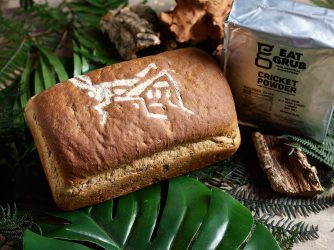

Each Crunchy Cricket loaf contains 336 crickets
“We see this as a great opportunity to challenge not just the consumer, but the bakery category,” said Nicole Johnson, Senior NPD Technologist, Roberts Bakery. “It has become stale; in terms of the innovation coming forwards in this market, it’s not strong enough.”
Johnson is described as the “big new ideas brain” at the bakery, responsible for “inventing the un-invented”. In September 2017 she created gin & tonic ‘fun buns’ and is behind the company’s ‘crunchy cricket’ bread.
Every Roberts Bakery product starts its journey in The Exploratory – its concept kitchen. “Here, we experiment with new technology and new ingredients,” Ordonez said.
Each of Roberts Bakery’s crunchy cricket loaves contain about 336 crickets, which are dried and ground. They are then mixed with wheat flour, grains and barley malt flour to add flavour, and baked to become bread. Only 30 percent of the loaf is insect-based; this is because the cricket flour does not possess enough gluten to make a loaf by itself.
The texture of the bread remains quite similar to what consumers are used to, according to Johnson, but the taste is naturally nuttier due to the roasted crickets; and in terms of the process, it is “virtually identical” to typical breadmaking, albeit slower and more manual.
The team has worked hard to optimise the recipe so that the structure, appearance, texture and flavours are familiar and as similar as possible to that of an ordinary loaf.
Certification
The crickets for Roberts Bakery are sourced from the world’s only farm with Grade A BRC food safety certification. “When dealing with BRC food certified manufacturers, we have found they only want ingredients that have a similar level of traceability and certification,” said Whippey. “It was hard to get those because insects are such a new ingredient and people have not had them in their chain before. We now have partners who can provide these assurances.”
Insects also require setting up an extra line – a task that Roberts had to contend with and part of the reason why the process was slower. “We had to ensure full segregation from other products that were vegetarian or vegan,” Ordonez remarked.
The future of bread
The crunchy cricket loaf was a special edition from Roberts Bakery, but Ordonez did say that there is scope for a more permanent product depending on customer reaction and cost.
Currently, insects are a rather costly commodity, but the price is reducing. Roberts Bakery is currently in discussion with Eat Grub about scaling‑up an affordable solution.
However, in terms of the ‘next thing’, the bakers are looking at the use of vegetables in bread. “We believe this will not only make loaves more interesting but also provide those health needs consumers are looking for,” Ordonez said. “There’s always room for quirky ideas – customers want to be stimulated by their food, and enjoy the visual aspects and challenge of trying new things.”
Things are only ‘new’ once; after all, sushi would have once been regarded as unusual by Western cultures, so it’s feasible that insects could see the same transformation in the UK. Whether or not insect bread will become the most common way to consume them is yet unclear, but what is clear is that our planet is in crisis and the best way to solve a crisis is with an open mind.
Biography
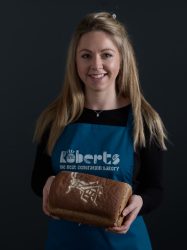

for innovation and is the mastermind behind the company’s Crunchy Cricket loaf.
Alison Ordonez (right) has more than 20 years of bakery experience, having spent 14 years with Roberts Bakery


across its technical and general management departments. In her current role, Alison leads the innovation team and is responsible for new product development. She is a BSc (Hons) food graduate.
References
1. FAO [Internet]. Fao.org. 2020 [cited 21 January 2020]. Available from: http://www.fao.org/3/i3253e/i3253e05.pdf
Issue
Related topics
Health & Nutrition, Ingredients, Insect Protein, Research & development, retail, Supermarket, Sustainability, The consumer




